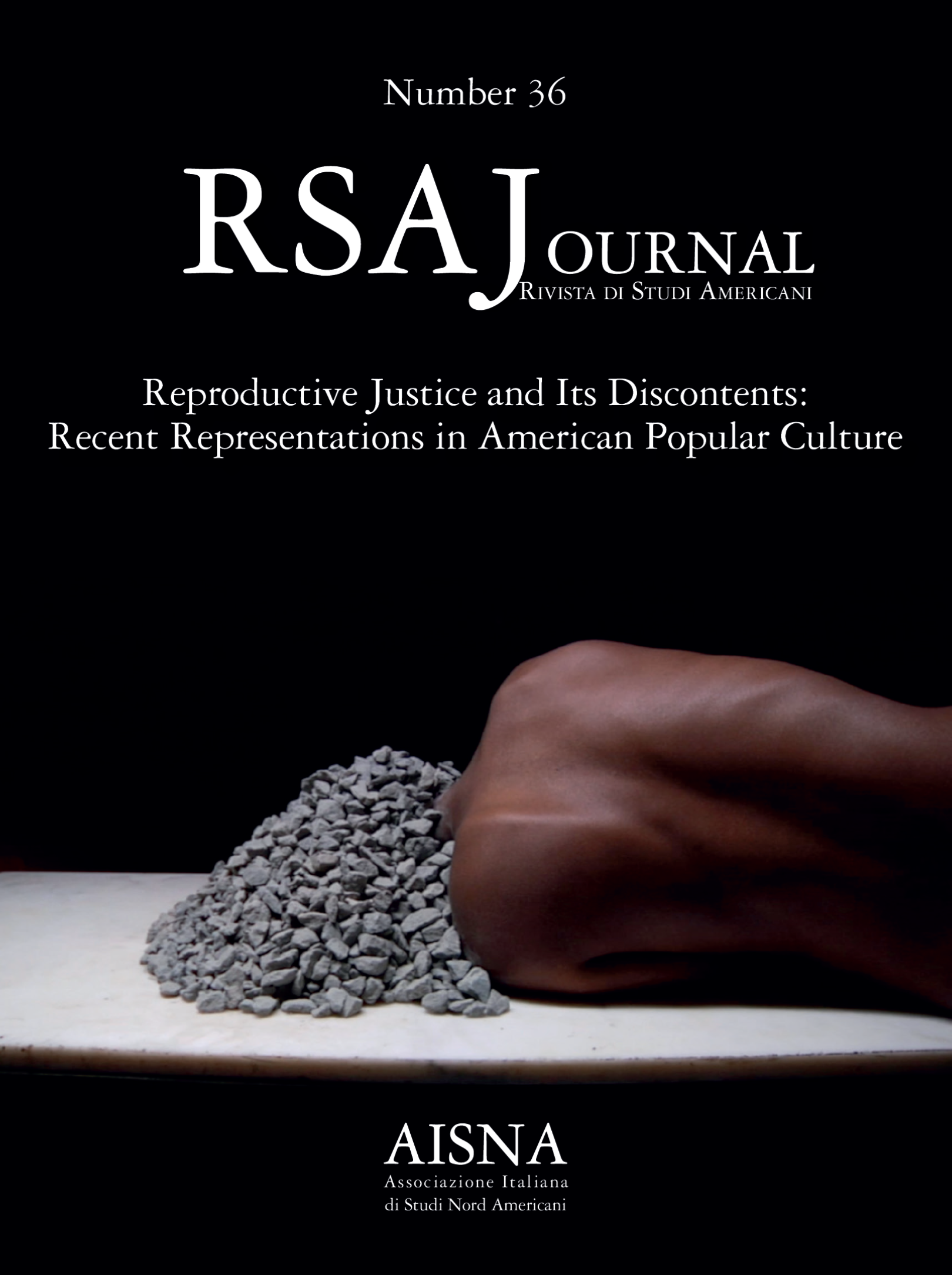Editor's Note
DOI:
https://doi.org/10.13135/1592-4467/12467Parole chiave:
Editor's noteAbstract
Issue n. 36 (2025) of RSAJournal features a Special Section on reproductive justice in the United States, edited by Cristina Di Maio and Fulvia Sarnelli. Framed by the post-Dobbs v. Jackson Women’s Health Organization (2022) landscape, the section examines not only legal and healthcare repercussions but also the cultural and symbolic dimensions of this pivotal shift, from pronatalist rhetoric to popular culture as an ideological battleground. Drawing on the reproductive justice framework developed by African American activists in the 1990s, the opening interview with Loretta Ross – co-author of one of the movement’s foundational texts – provides the interpretive key to the section, positioning popular culture as a strategic space for resistance and the imagination of alternative futures. The contributions explore diverse genres and media: historical fiction on forced sterilization, a bestselling novel prompting a redefinition of life and autonomy, screen portrayals of breastfeeding, the evolution of the teen
abortion road trip movie, male stand-up comedy’s engagement with abortion, and political strategies to involve men in reproductive rights debates.
The Articles Section presents essays on Louis Adamic’s influence on Carlos Bulosan’s immigrant autobiography (Enrico Mariani), the global ramifications of the Thirteenth Amendment’s 160th anniversary (Don H. Doyle), and Henry Charles Carey’s political economy and gender hierarchies (Matteo Rossi).
The Forum Section, edited by Alessandra Bitumi and Matteo Pretelli, marks the 80th anniversary of the end of World War II. Seven leading historians reassess the war’s memory, global impact, and contested legacies, questioning the durability of the post-1945 liberal order amid current geopolitical shifts.
The First Editions Section, edited by Tess Chakkalakal, introduces William Belmont Parker’s reader’s report on Charles W. Chesnutt’s The Marrow of Tradition (1901), contextualizing its historical, literary, and editorial significance in confronting Jim Crow’s color line. This is the first digital-only issue of RSAJournal, now entirely Open Access and indexed in major academic databases.
##submission.downloads##
Pubblicato
Fascicolo
Sezione
Licenza
Copyright (c) 2025 Andrea Carosso

Questo lavoro è fornito con la licenza Creative Commons Attribuzione - Non commerciale - Non opere derivate 4.0 Internazionale.
Avviso sul Copyright
RSAJournal applica una licenza CC BY-NC-ND a tutti i suoi contributi. Questa licenza consente agli utenti di copiare e distribuire il materiale in qualsiasi supporto o formato solo in forma non adattata, per scopi non commerciali e a condizione che venga esplicitato/a l'autore/autrice dell'opera. CC BY-NC-ND include i seguenti elementi:
- BY: L'autore deve essere riconosciuto come tale.
- NC: Sono consentiti solo utilizzi non commerciali dell'opera.
- ND: Non sono consentite opere derivate o adattamenti dell'opera.
Gli autori che pubblicano con questa rivista accettano i seguenti termini:
- Gli autori conservano il copyright e tutti i diritti di pubblicazione per i loro contributi alla rivista.
- Gli autori concedono alla rivista il diritto di prima pubblicazione in base alla licenza internazionale Creative Commons Attribution-NonCommercial-NoDerivatives 4.0, che consente ad altri di condividere l'opera non modificata per scopi non commerciali a condizione che venga esplicitato/a l'autore/autrice dell'opera e la sede di pubblicazione iniziale (questa rivista).
- Gli autori sono in grado di stipulare accordi contrattuali separati e aggiuntivi per la distribuzione non esclusiva della versione pubblicata dalla rivista (ad esempio, per inserirla in una repository istituzionale o pubblicarla in un libro), con l'indicazione che il contributo è stato precedentemente pubblicato in RSAJournal.




